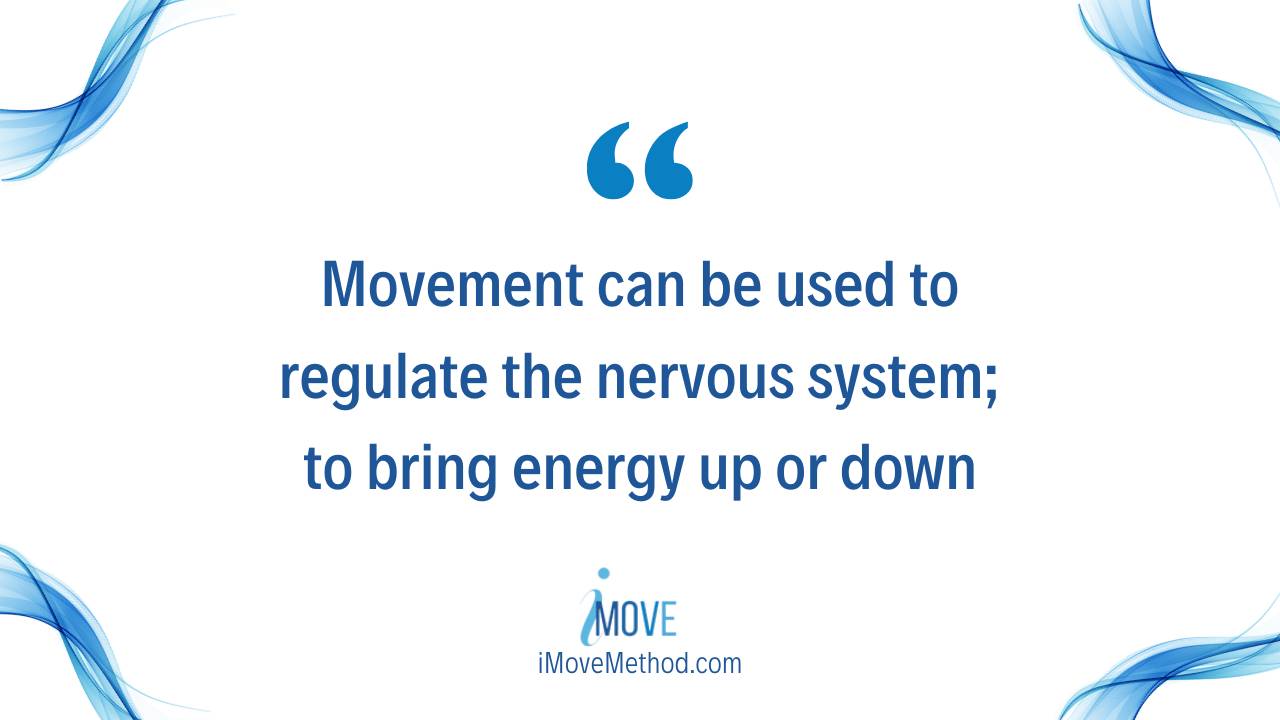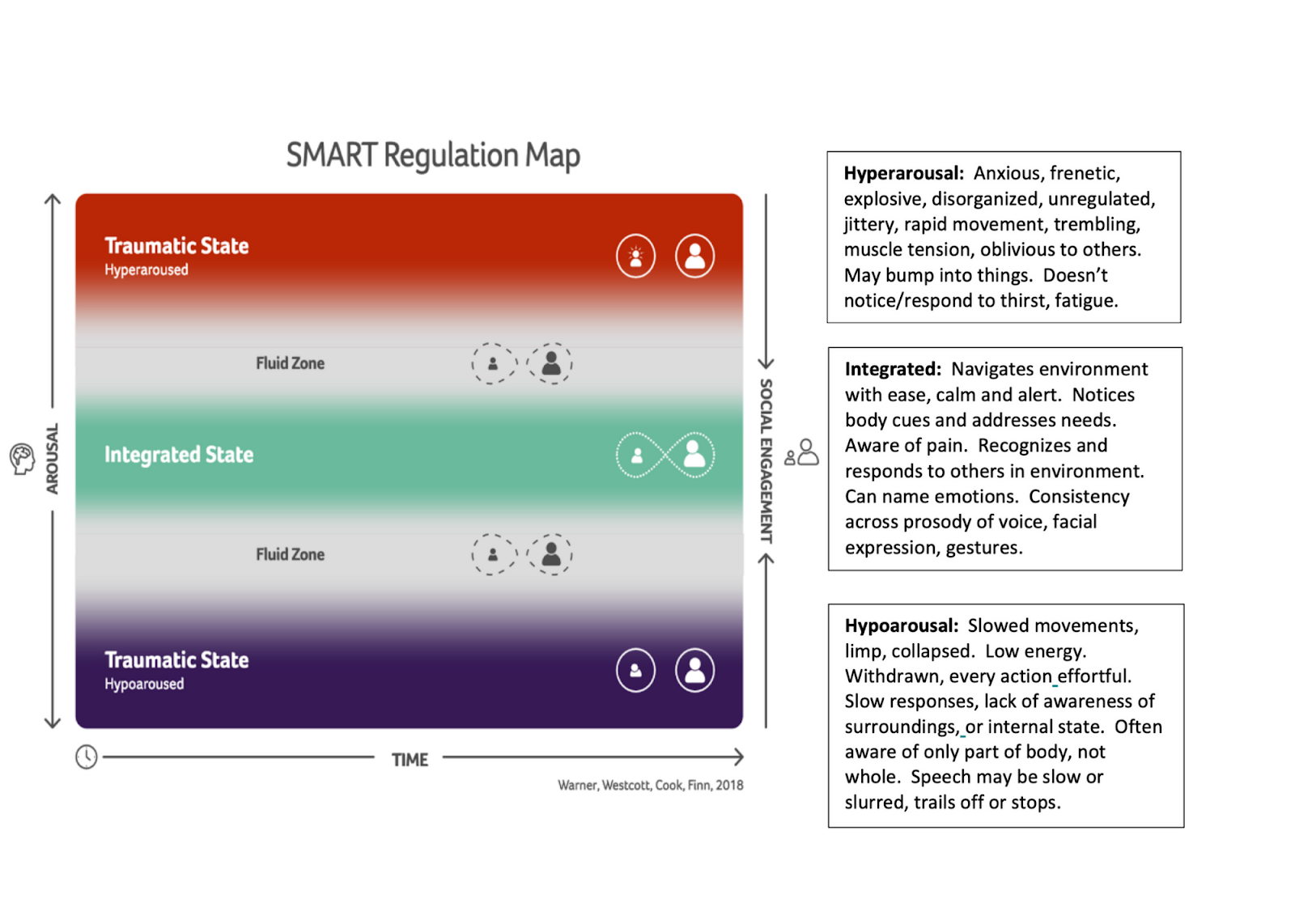How to Use Movement to Bring Your Energy Up or Down
Jan 10, 2023
Exercise and Movement can be used to bring energy into our nervous system. It can also be used to calm our system down.
You may notice your appetite for movement (type, intensity and duration) changes over time. This is related to many factors including emotion regulation, stress level, sleep, external environment, hormones and time of the year. Take a moment to think about the following questions.
- What kind of movement do you crave?
- Does this change on a daily basis?
- Do you notice changing patterns throughout the week, the month, even the year?
- How do you respond to these fluctuations?
In the iMove Method®, a lot of time is spent learning about the nervous system and how our unique systems respond to different (internal and external) environmental cues. We explore how movement can change states of arousal, grounding us when we are hyperaroused and welcoming energy in when we are hypoaroused.
Let’s first break down hyper- and hypoarousal.
The following image was taken from the book, Transforming Trauma in Children and Adolescents: An Embodied Approach to Somatic Regulation, Trauma Processing, and Attachment-Building by Elizabeth Warner, PsyD, Anne Wescott, LICSW, Alexandra Cook, PhD and Heather Finn, LICSW.
The integrated state is where an individual is centered and connected to the present moment in a way that allows for them to respond to the environment, engage in social reciprocity and address one’s needs.

I regularly touch base with individuals in session and in groups about where their nervous system is so we can explore how to help bring them more into the present.
Here is a helpful visual chart I use to explore this with clients and that is part of the resources practitioners get in the iMove Method® Certification and Training.

Once you know where your system (or your client’s system) is, you’ll have a better understanding of what might help them move more into an integrated state as referenced in the Warner et al model, or “green” state indicated in the graphic above.
Here are activities that individuals find helpful in moving into an integrated state when they are experiencing hyper or hypo arousal.
Hyperarousal (“red”)
- Connecting breath to movement (i.e. yoga or qigong)
- Heavy work (slow and steady strength work)
- Walking (alone or with another person)
- Slow, rhythmic motion
- Swaying, rocking slowly
Hypoarousal (“blue”)
- Cardiovascular exercise
- Dancing
- Swinging
- Jumping (rope, trampoline)
There are also plenty of non-exercise activities that can help up or down regulate the system. Here are a few ideas:
Hyperarousal (“red”)
- Drink a glass of ice water
- Look at pictures or imagine a place that you love, that makes you feel calm
- Think of a fun memory
- Slow your breathing, particularly focusing on elongating the exhale
- Give yourself a face massage (massaging parts of the face and ears helps stimulate the relaxation response)
- Use a brush in the shower, gently brushing your back, legs and arms
- Sit outside in green and/or blue spaces
- Color or draw (hint: notice your breath as you do this)
Hypoarousal (“blue”)
- Drink a glass of ice water
- Increase breathing pace, creating more heat
- Citrus and menthol scents (maybe add a few drops of essential oils to shower)
- Cook a meal
- Call a friend
- Watch a funny movie
- Listen to upbeat, energizing music
You may notice that ice water is listed in both sections.
It’s important to note that what one person may find grounding, may have the opposite effect for someone else.
Our nervous systems are unique and as such, the way we regulate is also unique. Deb Dana has a great activity in her book, Polyvagal Exercises for Safety and Connection called the “Energy and Actions” Map. I frequently use this in session with clients and it’s part of the iMove Method® curriculum.
Being aware of How to Use Movement to Bring Your Energy Up or Down is just one of many techniques you can use to help clients heal from compulsive exercise and be sure to use it with your clients.
Always explore and have the answers to these two questions:
- What activities do you find helpful to bring energy into your system?
- What helps to bring your system down?

You can start learning how to better help clients heal from compulsive exercise with my free guide that shares a 3 steps process to make this easier to do in your practice. Get your copy here.

